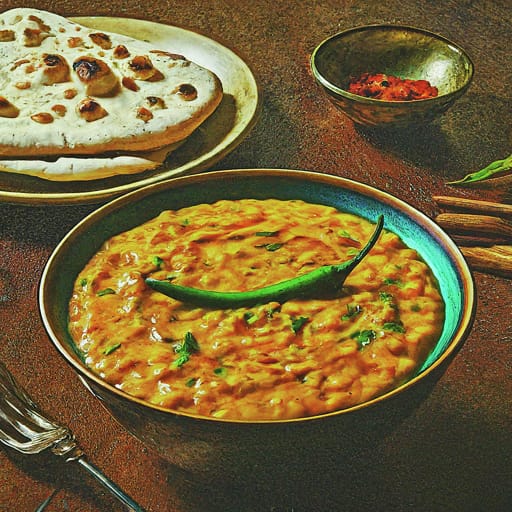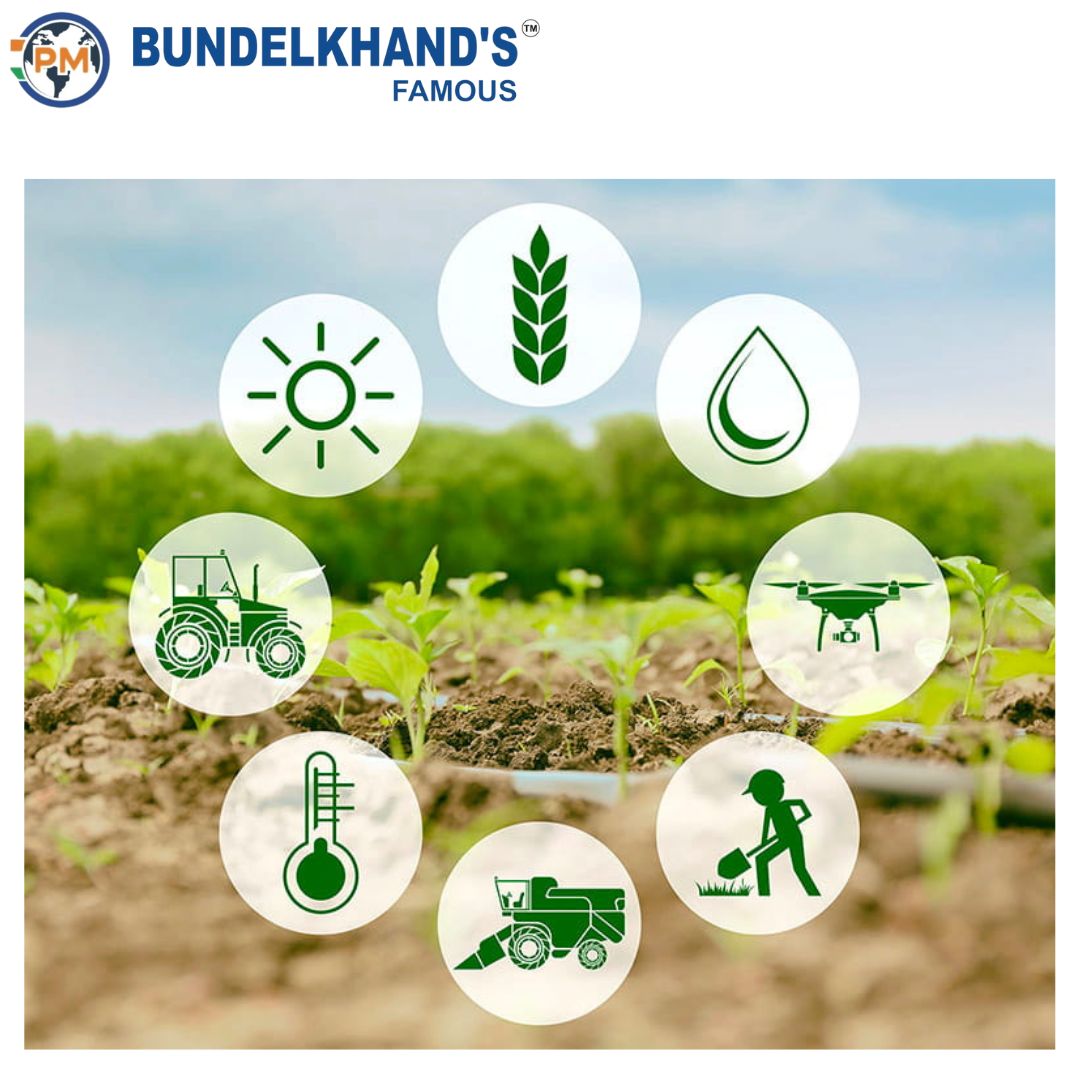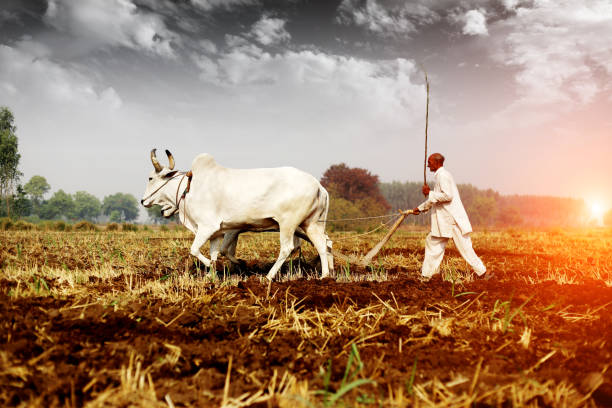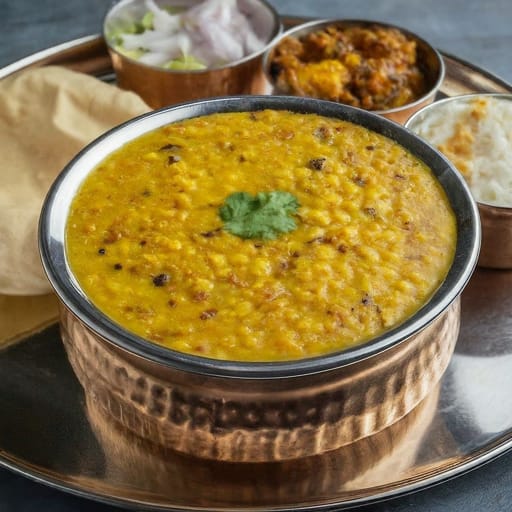Introduction
Split pigeon peas, commonly known as toor dal, are a staple in many cuisines worldwide, particularly in South Asia, Africa, and the Caribbean. As a versatile legume, split pigeon peas offer a rich flavor profile and a wealth of nutritional benefits, making them an essential ingredient in a variety of dishes. This blog post will delve into the history, cultivation, nutritional profile, culinary applications, and economic significance of split pigeon peas, providing a comprehensive understanding of this remarkable pulse. For more detailed insights and organic options, visit www.bundelkhandsfamous.com.
1. History and Origins of Split Pigeon Peas
Ancient Origins
Split pigeon peas have been cultivated for thousands of years, with their origins traced back to the Indian subcontinent. Archaeological evidence suggests that pigeon peas were grown as early as 3,500 years ago, making them one of the oldest domesticated crops. Their cultivation spread throughout Asia and Africa, where they became integral to local diets and farming systems.
#History #AncientOrigins #PigeonPeas

Global Spread
Over time, pigeon peas spread to other tropical and subtropical regions, including Africa, the Caribbean, and Latin America. This global dissemination was facilitated by trade routes and the movement of people, leading to the widespread cultivation and consumption of split pigeon peas in diverse culinary traditions.
#GlobalSpread #CulinaryTraditions #PigeonPeas
Evolution of Cultivation Practices
Traditional farming methods, such as intercropping with other staple crops like maize and sorghum, have been employed for generations. As agriculture advanced, modern techniques and improved varieties were introduced to enhance yield and resistance to pests and diseases. Efforts continue to focus on sustainable cultivation practices to ensure the long-term viability of split pigeon pea farming.
#SustainableFarming #Agriculture #CropEvolution
 2. Nutritional Profile of Split Pigeon Peas
2. Nutritional Profile of Split Pigeon Peas
Macronutrients
Split pigeon peas are a rich source of essential macronutrients, making them a valuable dietary component:
- Protein: With approximately 22 grams of protein per 100 grams, split pigeon peas provide a high-quality plant-based protein source, essential for muscle growth and repair.
- Carbohydrates: These legumes are rich in complex carbohydrates, offering around 60 grams per 100 grams. The carbohydrates provide sustained energy and help maintain stable blood sugar levels.
- Fiber: Split pigeon peas contain about 15 grams of dietary fiber per 100 grams, promoting digestive health and contributing to a feeling of fullness.
- Fats: Low in fat, with only about 1.5 grams per 100 grams, split pigeon peas are a heart-healthy food choice.
#NutritionalValue #ProteinSource #HealthyCarbs
Micronutrients
Split pigeon peas are packed with essential vitamins and minerals:
- Iron: An important source of iron, which is crucial for preventing anemia and supporting oxygen transport in the body.
- Calcium: Essential for maintaining strong bones and teeth.
- Potassium: Helps regulate blood pressure and supports muscle function.
- Magnesium: Plays a vital role in nerve function, muscle contraction, and heart health.
- Folate: Important for cell division and particularly crucial during pregnancy for fetal development.
- Vitamins B1, B2, and B3: Aid in energy metabolism and overall health maintenance.
#VitaminsAndMinerals #Iron #Calcium #Potassium
Antioxidants
Split pigeon peas are rich in antioxidants, including polyphenols and flavonoids, which help combat oxidative stress and reduce the risk of chronic diseases. These antioxidants contribute to the anti-inflammatory and immune-boosting properties of split pigeon peas.
#Antioxidants #ChronicDiseasePrevention #ImmuneBoost
Health Benefits
The nutritional profile of split pigeon peas translates into numerous health benefits:
- Heart Health: The fiber, potassium, and low-fat content support heart health by lowering cholesterol levels and maintaining healthy blood pressure.
- Digestive Health: The high fiber content aids digestion, prevents constipation, and supports a healthy gut microbiome.
- Weight Management: The combination of protein and fiber provides satiety, aiding in weight management and reducing the risk of overeating.
- Blood Sugar Control: The complex carbohydrates and fiber help regulate blood sugar levels, making them beneficial for individuals with diabetes.
#HealthBenefits #HeartHealth #DigestiveHealth #WeightManagement
3. Cultivation and Harvesting of Split Pigeon Peas
Ideal Growing Conditions
Split pigeon peas thrive in tropical and subtropical climates with warm temperatures and moderate rainfall. The ideal conditions for their cultivation include:
- Temperature: 18-30°C (64-86°F)
- Rainfall: 600-1,000 mm annually
- Soil Type: Well-drained, loamy soil with a pH of 6.0-7.5
#Agriculture #GrowingConditions #ClimateAdaptation

Cultivation Process
- Land Preparation: The land is plowed and leveled to ensure proper drainage and aeration.
- Sowing: Split pigeon pea seeds are sown directly into the soil or transplanted as seedlings. The recommended spacing is 30-60 cm between rows and 10-20 cm between plants.
- Irrigation: Adequate irrigation is crucial during the flowering and pod-filling stages to ensure optimal yield. However, excessive water should be avoided to prevent waterlogging.
- Weed and Pest Management: Regular weeding and pest control measures are essential to protect the crop from common pests like pod borers and aphids.
- Fertilization: Balanced fertilization, including nitrogen, phosphorus, and potassium, enhances growth and yield.
#CultivationProcess #Irrigation #WeedManagement #Fertilization
Harvesting
Split pigeon peas are typically harvested 5-6 months after sowing, depending on the variety and growing conditions. The pods are ready for harvest when they turn brown and dry. Harvesting involves cutting the plants close to the ground and threshing to separate the seeds from the pods.
#Harvesting #AgriculturalPractices #YieldManagement
Post-Harvest Processing
- Drying: The harvested seeds are sun-dried to reduce moisture content and prevent spoilage.
- Cleaning: The dried seeds are cleaned to remove debris, stones, and damaged grains.
- Splitting: The cleaned seeds are split using milling machines to produce split pigeon peas, which are then sorted and packaged.
- Packaging: Split pigeon peas are packaged in moisture-proof bags to maintain freshness and quality during storage and transportation.
#PostHarvestProcessing #Drying #Packaging
Sustainability in Cultivation
Sustainable cultivation practices are essential to ensure the long-term viability of split pigeon pea farming. These practices include:
- Crop Rotation: Alternating pigeon peas with other crops to maintain soil fertility and reduce pest and disease pressure.
- Integrated Pest Management (IPM): Combining biological, cultural, and chemical methods to control pests and minimize environmental impact.
- Water Conservation: Implementing efficient irrigation techniques, such as drip irrigation, to conserve water and reduce wastage.
- Organic Farming: Adopting organic farming methods to minimize chemical inputs and promote soil health and biodiversity.
#Sustainability #OrganicFarming #WaterConservation
4. Culinary Uses of Split Pigeon Peas
Traditional Dishes
Split pigeon peas are a staple ingredient in various cuisines, offering a rich and nutty flavor that complements a wide range of dishes. Here are some traditional preparations:
Indian Cuisine
- Dal Tadka: A classic North Indian dish, dal tadka involves tempering cooked split pigeon peas with ghee, cumin seeds, mustard seeds, garlic, and red chili for a flavorful and aromatic curry.
- Sambar: A South Indian delicacy, sambar is a tangy and spicy lentil soup made with split pigeon peas, vegetables, tamarind, and spices, often served with rice, idli, or dosa.
- Gujarati Dal: A sweet and tangy preparation, Gujarati dal combines split pigeon peas with jaggery, tamarind, and spices, offering a unique flavor profile.
- Maharashtrian Amti: A traditional Maharashtrian dish, amti is a spicy and tangy dal made with split pigeon peas, coconut, and goda masala, served with rice or bhakri.
#IndianCuisine #DalTadka #Sambar #GujaratiDal

Caribbean Cuisine
- Pigeon Peas and Rice: A popular Caribbean dish, combining split pigeon peas with rice, coconut milk, and spices for a flavorful one-pot meal.
- Trinidadian Pelau: A one-pot rice and pigeon pea dish cooked with meat, vegetables, and aromatic spices, offering a rich and hearty meal.
#CaribbeanCuisine #PigeonPeasAndRice #TrinidadianPelau
African Cuisine
- Mbaazi Wa Nazi: A traditional East African dish, combining split pigeon peas with coconut milk and spices, often served with rice or chapati.
- Pigeon Pea Stew: A savory stew made with split pigeon peas, vegetables, and spices, popular in various African countries.
#AfricanCuisine #MbaaziWaNazi #PigeonPeaStew
Modern and Innovative Recipes
Split pigeon peas are increasingly being incorporated into modern and international recipes, showcasing their versatility and adaptability. Some contemporary dishes include:
- Pigeon Pea Salad: A refreshing salad made with cooked split pigeon peas, fresh vegetables, herbs, and a tangy dressing.
- Pigeon Pea Soup: A hearty soup with split pigeon peas, vegetables, and spices, offering a warming and nutritious meal.
- Pigeon Pea Burgers: Plant-based burgers made with mashed split pigeon peas, spices, and vegetables, providing a healthy and protein-rich alternative.
#ModernCuisine #Salad #Soup #PlantBasedBurgers
Cooking Tips and Techniques
- Soaking: Soaking split pigeon peas for a few hours before cooking reduces cooking time and enhances digestibility.
- Cooking Methods: Split pigeon peas can be boiled, pressure-cooked, or slow-cooked, depending on the desired texture and recipe.
- Seasoning: Adding aromatic spices and herbs enhances the flavor and complements the natural nuttiness of split pigeon peas.
- Storage: Store split pigeon peas in an airtight container in a cool, dry place to maintain freshness and quality.
#CookingTips #Soaking #Seasoning #Storage
5. Economic Importance of Split Pigeon Peas
Global Production and Trade
Split pigeon peas are cultivated in various countries worldwide, with India being the largest producer and consumer. Other significant producers include Myanmar, Malawi, Tanzania, and Kenya. The global trade of split pigeon peas is influenced by factors such as demand, supply, weather conditions, and government policies.
#GlobalProduction #Trade #AgriculturalEconomy
Economic Impact on Agriculture
Split pigeon peas play a significant role in the agricultural economy, contributing to livelihoods and food security:
- Income Source for Farmers: Cultivation provides a vital income source for millions of smallholder farmers, supporting rural economies and livelihoods.
- Export Potential: Countries like India and Myanmar are major exporters of split pigeon peas, contributing to foreign exchange earnings and trade balance.
- Employment Generation: The cultivation, processing, and distribution generate employment opportunities across the value chain, from farming to retail.
#EconomicImpact #IncomeSource #EmploymentGeneration
Market Trends and Challenges
- Demand and Supply Dynamics: The demand continues to rise due to population growth and increasing awareness of its nutritional benefits. However, supply fluctuations, driven by climate change and market volatility, pose challenges to meeting this demand.
- Price Volatility: Prices are subject to fluctuations due to factors such as weather conditions, pest outbreaks, and trade policies. This volatility affects both producers and consumers, impacting affordability and accessibility.
- Policy Interventions: Government policies and interventions, such as minimum support prices and subsidies, play a crucial role in stabilizing production and ensuring fair returns for farmers.
#MarketTrends #PriceVolatility #PolicyInterventions
Innovations and Opportunities
- Value Addition: Opportunities exist for value addition through the development of processed products, such as flour, snacks, and ready-to-cook mixes, catering to diverse consumer preferences.
- Sustainable Practices: Innovations in sustainable agriculture, such as organic farming and agroecological practices, offer opportunities for enhancing productivity while minimizing environmental impact.
- Research and Development: Continued research and development efforts focus on improving varieties, pest resistance, and climate resilience, ensuring long-term sustainability and productivity.
#Innovations #Sustainability #ResearchAndDevelopment
6. Cultural Significance of Split Pigeon Peas
Traditional and Religious Importance
Split pigeon peas hold cultural and religious significance in various communities:
- Festivals and Celebrations: Integral to festive meals and celebrations, symbolizing prosperity and abundance. They are often prepared as a special dish during festivals like Diwali and Pongal.
- Rituals and Offerings: In some cultures, they are used in religious rituals and offerings, signifying purity and nourishment.
- Culinary Traditions: Recipes are passed down through generations, preserving culinary traditions and family heritage.
#CulturalSignificance #Festivals #Rituals #Traditions
Split Pigeon Peas in Literature and Folklore
Split pigeon peas find mention in literature, folklore, and traditional songs, reflecting their deep-rooted cultural significance:
- Proverbs and Sayings: Featured in various proverbs and sayings, symbolizing essential qualities such as nourishment and sustenance.
- Folktales and Stories: Often depicted as a staple food, highlighting their importance in daily life and community bonding.
- Culinary Narratives: Traditional stories and narratives celebrate their role in regional cuisines, showcasing versatility and adaptability.
#Literature #Folklore #CulinaryNarratives
7. Future Prospects and Sustainability
Addressing Challenges
The future of split pigeon pea production and consumption faces several challenges that require proactive solutions:
- Climate Resilience: Developing climate-resilient varieties and promoting sustainable farming practices are essential to mitigate the impact of climate change on cultivation.
- Food Security: Ensuring food security through improved access to affordable and nutritious split pigeon peas is crucial for addressing malnutrition and hunger.
- Market Stability: Enhancing market stability through transparent pricing mechanisms, supply chain efficiencies, and policy support is vital for sustaining production and trade.
#FutureProspects #Challenges #ClimateResilience #FoodSecurity
Embracing Innovations
Innovations and technological advancements offer opportunities for transforming the split pigeon pea sector:
- Digital Agriculture: Leveraging digital tools and technologies, such as precision farming and data analytics, can optimize production and improve decision-making.
- Value Chain Integration: Strengthening value chain integration and collaboration among stakeholders can enhance efficiency, quality, and market access.
- Consumer Awareness: Promoting consumer awareness about the nutritional benefits and culinary versatility of split pigeon peas can drive demand and encourage healthy eating habits.
#Innovations #DigitalAgriculture #ValueChainIntegration #ConsumerAwareness
Conclusion
Split pigeon peas are more than just a staple food; they are a symbol of sustenance, culture, and economic significance. From their ancient origins to modern-day culinary applications, they continue to nourish and connect people across the globe. By understanding the multifaceted aspects of split pigeon peas, we can appreciate their value and contribute to their continued growth and success. Whether you are a farmer, cook, consumer, or researcher, split pigeon peas invite you to explore their rich heritage and potential, inspiring a healthier and more sustainable world.
For more information on organic split pigeon peas and other agricultural products, visit Bundelkhand’s Famous, a trusted source for high-quality, organic produce.
#SplitPigeonPeas #Sustainability #CulinaryHeritage #OrganicProducts #BundelkhandFamous

Your point of view caught my eye and was very interesting. Thanks. I have a question for you.
Your article helped me a lot, is there any more related content? Thanks!
Can you be more specific about the content of your article? After reading it, I still have some doubts. Hope you can help me. https://accounts.binance.com/en-IN/register?ref=UM6SMJM3
Can you be more specific about the content of your article? After reading it, I still have some doubts. Hope you can help me.
Thank you for your sharing. I am worried that I lack creative ideas. It is your article that makes me full of hope. Thank you. But, I have a question, can you help me? https://accounts.binance.info/en-IN/register-person?ref=UM6SMJM3
I don’t think the title of your article matches the content lol. Just kidding, mainly because I had some doubts after reading the article.
Your point of view caught my eye and was very interesting. Thanks. I have a question for you.
Thanks for sharing. I read many of your blog posts, cool, your blog is very good.
Your article helped me a lot, is there any more related content? Thanks!
Your article helped me a lot, is there any more related content? Thanks! https://accounts.binance.info/en-IN/register-person?ref=UM6SMJM3
Your point of view caught my eye and was very interesting. Thanks. I have a question for you.
Thanks for sharing. I read many of your blog posts, cool, your blog is very good.
Thank you for your sharing. I am worried that I lack creative ideas. It is your article that makes me full of hope. Thank you. But, I have a question, can you help me?
Your article helped me a lot, is there any more related content? Thanks!
Thanks for sharing. I read many of your blog posts, cool, your blog is very good.
Can you be more specific about the content of your article? After reading it, I still have some doubts. Hope you can help me.
Your article helped me a lot, is there any more related content? Thanks!
Your point of view caught my eye and was very interesting. Thanks. I have a question for you.
Your point of view caught my eye and was very interesting. Thanks. I have a question for you.
you are really a good webmaster. The website loading velocity is incredible.
It kind of feels that you are doing any distinctive trick.
Also, The contents are masterwork. you have done a magnificent process on this subject!
I don’t think the title of your article matches the content lol. Just kidding, mainly because I had some doubts after reading the article.
Your article helped me a lot, is there any more related content? Thanks! https://www.binance.com/vi/register?ref=WTOZ531Y
Thank you for your sharing. I am worried that I lack creative ideas. It is your article that makes me full of hope. Thank you. But, I have a question, can you help me?
Your article helped me a lot, is there any more related content? Thanks!